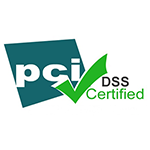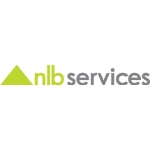© 2025 Next Level Business Services Inc. All Rights Reserved.
Change Management in Changing Times
By NLB Services
In today’s dynamic and ever-evolving business landscape, organizations must constantly adjust and respond to internal and external shifts. Effective change management strategies are intricately developed to mitigate resistance, optimize adoption, and ensure seamless execution of required changes within the organization’s operational framework. This blog will unravel the underlying complexities and intricacies of change, the required interventions, and the possible roadblocks that could hinder an organization’s adaptation endeavors.
Understanding the Need for Change Management
Today businesses are operating in a fast-paced environment that’s constantly subjected to change owing to various internal and external factors. Successful organizations know that they have to take these changes in their stride and quickly adapt to ensure sustainability and growth. As change has become an inevitable part of every business cycle, there’s a pressing need for businesses to understand the driving factors to foresee these changes in time and devise strategies to act promptly in response to them, ensuring long-term success.
Let’s delve into some of the key drivers of change in greater detail.
Customer Demands
With cut-throat competition in the market, businesses cannot survive unless they promptly tend to their customer’s evolving needs to keep up with the market trends. Businesses should factor in customer demographics and other socio-economic indicators to remain attuned to their target audience’s mindset and requirements to tailor their products and services, conferring an impeccable consumer experience.
Technological Interventions
With rapid technological advancements businesses have to adapt and leverage these opportunities to ensure their relevancy. The advent of AI Tools, machine learning, and other digital transformations have completely transformed businesses’ internal and external operations. For instance, from businesses incorporating new software applications to enhance internal communications to implementing innovations like AI tools and blockchain, technology has completely redefined the business landscape.
Political Landscape
Given the dynamic nature of the political landscape, businesses’ success is directly contingent upon their ability to keep up with the economic trends, changing laws and regulations, tax structure, import/export duties, and other legal obligations to stay in compliance with the regulatory policies.
Undeniably there are a number of external forces that mandate the need for change in business operations. However, there are times when internal shifts or challenges can necessitate change; for instance, factors like change in leadership and workforce, internal inefficiencies, or financial implications can drive the organization to adapt to superior technologies and efficient operational systems.
Developing a Change Management Strategy
A change management strategy acts like a roadmap, guiding the organization through different aspects of change, highlighting the key objectives and goals, outlining the necessary resources required, and the timeline within which they aim to implement the required changes. The strategy is built to capitalize on the transition process while mitigating any negative consequences that could potentially arise. Additionally, with over 50 percent of change initiatives rendering unsuccessful, it is crucial for managers and leaders to prepare for and organize to implement change.
The preparatory phase of any change management strategy should begin with inculcating a sense of crucial driving factors or challenges propagating for change within the management, be it external or internal forces. The likelihood of resistance is greatly reduced when the employees fully understand why the change is necessary. Once the cultural aspect is taken care of and the organization is ready for change, managers should tend to the logistics of the implementation process, creating a comprehensive change management plan entailing the following factors.
Strategic goals
Clearly outline the key objectives underlying the change initiatives. These objectives have to be aligned with the organization’s overarching strategic goals providing a direct link between how the change will affect the desired outcome. Here you should also consider any roadblocks that may arise during the implementation process, stressing the importance of adaptability and flexibility required to respond appropriately to such occurrences.
Key performance Indicators
Identify quantifiable metrics that will be used to evaluate the effectiveness of the change management strategy. Establish a baseline for current performance and set clear goals, allowing the organization to monitor developments and assess the outcome objectively.
Stakeholders
List the key stakeholders in the change process, such as sponsors, decision-makers, and implementers. To ensure everyone is aware of their involvement and contribution in the process, clearly define their roles and responsibilities. Create communication channels and assign decision-making authority to ensure effective cooperation and accountability.
Project Scope
Define what falls within and outside of the project’s scope. This helps manage expectations and monitor the resources and efforts, ensuring it’s aligned with the most important aspects of change.
In essence, organizations should create a comprehensive change management plan that addresses these components, offering a clear road map for the change process. It enables an organization to effectively monitor progress, achieve strategic goals, and encourage active participation from stakeholders and project teams. Ultimately strengthening the organization’s ability to navigate change and deliver the intended results successfully.
Managing resistance to change
Managing resistance is a critical aspect of change management in organizations. More often than not, employees need greater support to change, making it difficult for managers to implement the necessary interventions. Understanding these common sources of resistance within an organization is essential to help leaders and managers anticipate and address them effectively.
In the face of change, individuals must acquire new competencies or adapt to cutting-edge technologies. Certain employees may harbor concerns that failing to develop the requisite skills could imperil their job stability. They may inadvertently exhibit a ‘Fear of the unknown,’ resisting potential negative consequences of change like unfamiliar work processes, increased workload, or even job loss if unable to cope. Negative past experiences resulting from unsuccessful change efforts further intensify this resistance. For instance, if employees have failed to adapt to changes made in the past or if the organization has poorly executed those changes, they may be skeptical or resistant to future change initiatives.
In fact, organizational culture plays an important role in shaping employees’ attitudes toward change. They may exhibit mistrust in the company’s management resulting from inconsistent communication or inadequate training programs and support resources leading to a lack of confidence and credibility in the process. Additionally, relationships within an organization also influence change to a great extent. Individuals may be deterred from accepting or expressing support for the change under peer pressure or societal norms. As change is often perceived as a threat, it is essential to recognize employee mindset and organizational culture to bring change in the workspace successfully.
Empowering and training employees
The need for change is an essential and recurring challenge that every company encounters at various stages of its lifespan. Organizational transformation requires empowerment and participation at all levels. Often leaders get so involved with other technical aspects of change management that they completely overlook the fact that having an employee-centric approach is paramount to successful change. While it is important to inspire the team, providing them with increased autonomy to participate in the transformation process actively is crucial. Follow the steps enlisted to empower and train employees to lead change.
1. Creating a compelling change vision
Establishing a shared sense of purpose and alignment on the mission is crucial to developing an emotional connection to the process. Transparently communicating the underlying reasons for the change and elucidating how it will positively impact employees is critical. Once the team is aligned and clear with the mission, that’s when belief systems undergo a transformative shift, leading to new actions that yield the desired outcome.
2. Fostering an empowering culture
To facilitate effective change, it is important to cultivate a robust and positive workplace culture that governs daily operations within the organization. This entails ensuring that employees clearly understand their roles and responsibilities, as well as the expected behaviors. Delegation of work requires instilling trust in your employees with the autonomy to make necessary decisions or changes aligned with the organization’s objective. This enables them to take full ownership and responsibility over their actions, making them accountable and consequently increasing their performance ability.
3. Providing up-skilling and re-skilling initiatives
In order to attain organizational objectives and goals, managers are required to provide training and education on new systems and processes. Employees need to be educated and trained to enhance their technical skills and develop new behavioral skills that are aligned with the end goal. Identification of specific areas where employees require up-skilling is crucial, and training methods should be set in place accordingly. A certain degree of resistance or discomfort is anticipated with changed processes and systems; supervisors and leaders should provide total support where required to navigate through challenges faced by employees while adapting to the new systems. Employee recognition plays a vital role at this stage, whereby their work should be acknowledged, recognized, and appreciated in the form of bonuses, incentives, and promotions, consequently inspiring the remaining workforce.
Evaluating and Measuring Change
To assess the effectiveness of a change management strategy, businesses should employ key performance indicators (KPIs). These indicators are essential in gaining valuable insight to evaluate the success of change implementation whilst also identifying any challenges faced along the way to help organizations prepare for similar roadblocks in the future. These indicators are usually in the form of quantitative or qualitative goals, enabling organizations to assess their overall performance by gauging areas of improvement and identifying possible gaps or limitations by tracking tangible and measurable outcomes. The indicators inform organizations of corrective measures, thereby streamlining their efforts and ensuring the effective allocation of resources to achieve the desired results.
These indicators are part of a multi-faceted approach encompassing a wide range of metrics going beyond financial targets. These indicators are essential to assess internal inefficiencies considering a variety of other objectives like ROI, customer satisfaction, new customer acquisition, employee engagement, and market competitiveness. KPIs, in essence, uptake a comprehensive view ensuring the evaluation of a strategy’s success is not exclusively dependent on financial outcomes but also encompasses other pivotal factors elemental for sustained long-term growth. As such, it enables companies to navigate the intricate dynamics of change more effectively, make informed decisions, and drive sustainable and positive transformation within their organizational ecosystem.
Conclusion
With change being an inevitable part of every business’s life cycle, it is necessary for managers to comprehend the driving forces of change and formulate strategies and action plans accordingly. In this blog, we have greatly emphasized the aforementioned factors, outlining the most significant ways to counteract resistance to change, and ensuring seamless integration of change initiatives. By taking cognizance of the factors underpinning resistance, managers can enjoy the first mover’s advantage by seizing opportunities and swiftly optimizing strategies. By embracing change as a transformative process, organizations can confidently navigate change, leverage upcoming opportunities, and establish themselves in their respective industries, leading to sustainability and ensuring success against dynamic challenges.
Talent Solutions








